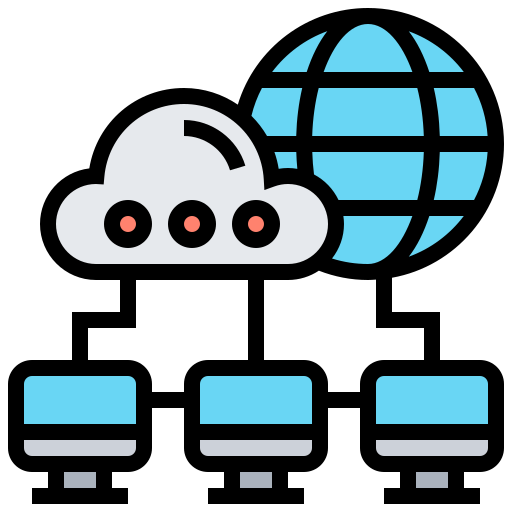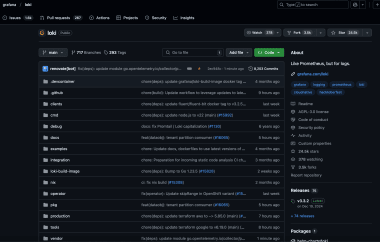7 min to read
Understanding OSI 7 Layers and TCP/IP 4 Layers
A comprehensive comparison of OSI and TCP/IP network models

Overview
Let’s explore the OSI 7 Layer model and TCP/IP 4 Layer model, understanding their structures and differences.
Why Network Models Matter
Network models provide a standardized framework for understanding how data travels from one device to another. They help in:
- Troubleshooting network issues
- Designing network protocols
- Facilitating vendor interoperability
- Simplifying network complexity through modularity
- Providing a common language for network professionals
OSI 7 Layers
What is OSI?
The OSI (Open Systems Interconnection) model is a reference model for network protocol stacks developed by ISO (International Organization for Standardization).
Layer Structure
OSI Model (7 Layers):
- Application : Interfaces with the user and provides network services (HTTP, FTP).
- Presentation : Formats and encrypts data for the application layer.
- Session : Manages sessions and connections between devices.
- Transport : Ensures reliable data transfer (TCP, UDP).
- Network : Handles logical addressing and routing (IP).
- Data Link : Manages error detection and frame synchronization (Ethernet).
- Physical : Transmits raw data over physical media (cables, radio waves).
Detailed Explanation of Each OSI Layer
Layer 7: Application Layer
Function: Provides network services directly to end-users and applications.
Key Protocols: HTTP/HTTPS (Web), FTP (File transfer), SMTP (Email), DNS (Domain name), SSH (Remote access), Telnet (Terminal)
Data Unit: Data
Analogy: The content of a letter (the actual message you want to send).
Layer 6: Presentation Layer
Function: Translates data between application format and network format.
Responsibilities: Data translation (ASCII, EBCDIC), Encryption/Decryption (SSL/TLS), Compression (JPEG, MPEG, GIF), Data formatting
Data Unit: Data
Analogy: Translation of your letter into a language the recipient understands.
Layer 5: Session Layer
Function: Establishes, manages, and terminates communication sessions.
Responsibilities: Session establishment/maintenance/termination, checkpointing, dialog control (full/half-duplex)
Protocols: NetBIOS, RPC, PPTP
Data Unit: Data
Analogy: A phone call - starting, maintaining, and ending a conversation.
Layer 4: Transport Layer
Function: Provides reliable data transfer services between end systems.
Key Protocols: TCP (reliable), UDP (fast, unreliable)
Responsibilities: Segmentation/reassembly, error recovery, flow control, connection management, port addressing
Data Unit: Segments (TCP) / Datagrams (UDP)
Analogy: A postal service that ensures your letters arrive in order and without damage.
Layer 3: Network Layer
Function: Routes data packets between different networks.
Key Protocols: IP (IPv4, IPv6), ICMP, IGMP, OSPF, BGP, RIP
Responsibilities: Logical addressing (IP), path determination, packet forwarding, fragmentation/reassembly
Data Unit: Packets
Devices: Routers, Layer 3 Switches
Analogy: A mail sorting facility that determines the best route for your letter.
Layer 2: Data Link Layer
Function: Provides reliable data transfer between directly connected nodes.
Sub-layers: MAC (hardware addressing), LLC (flow control, error checking)
Key Protocols: Ethernet, PPP, HDLC, Frame Relay, ATM
Responsibilities: Physical addressing (MAC), error detection/handling, frame sync, media access control
Data Unit: Frames
Devices: Switches, Bridges, NICs
Analogy: Putting your letter in an envelope with a specific address.
Layer 1: Physical Layer
Function: Transmits raw bit stream over physical medium.
Responsibilities: Bit transmission, medium specs, signal encoding, data rate, connectors
Standards: RS-232, V.35, RJ45, Ethernet physical, DSL, ISDN
Data Unit: Bits
Devices: Hubs, Repeaters, Cables, Connectors
Analogy: The actual transportation method (truck, plane) that carries your letter.
TCP/IP 4 Layers
What is TCP/IP?
TCP/IP (Transmission Control Protocol/Internet Protocol) is the reference model for internet protocol stacks.
Layer Structure
TCP/IP Model (4 Layers):
- Application : Combines Application, Presentation, and Session layers (HTTP, DNS).
- Transport : Provides end-to-end communication (TCP, UDP).
- Internet : Handles addressing and routing (IP).
- Network Interface : Combines Data Link and Physical layers, managing hardware transmission.
Detailed Explanation of TCP/IP Layers
Layer 4: Application Layer
Equivalent OSI Layers: Application, Presentation, Session
Key Protocols: HTTP/HTTPS, FTP, SMTP/POP3/IMAP, DNS, Telnet/SSH, SNMP
Function: Provides network services to applications and handles data formatting, encryption, and session management.
Layer 3: Transport Layer
Equivalent OSI Layer: Transport
Key Protocols: TCP (reliable), UDP (fast, unreliable)
Function: Manages end-to-end communication, segmentation, flow control, error recovery.
Port Ranges:
- Well-known: 0-1023
- Registered: 1024-49151
- Dynamic/Private: 49152-65535
Layer 2: Internet Layer
Equivalent OSI Layer: Network
Key Protocols: IP (IPv4, IPv6), ICMP, ARP, IGMP
Function: Handles logical addressing, routing, and packet forwarding between networks.
Layer 1: Network Interface Layer
Equivalent OSI Layers: Data Link, Physical
Technologies: Ethernet, Wi-Fi (802.11), PPP, FDDI, Token Ring
Function: Manages physical addressing, media access, and transmission of data over physical networks.
Key Differences: OSI vs TCP/IP Model
| Aspect | OSI Model | TCP/IP Model |
|---|---|---|
| Layer Organization | 7 distinct layers | 4 consolidated layers |
| Application Functionality | Divided into Application, Presentation, Session | Combined into a single Application layer |
| Data Flow | Layer-by-layer processing | Direct data transfer between layers |
| Implementation | Theoretical reference model | Practical implementation standard |
| Development | Developed before protocols were implemented | Developed after protocols were in use |
| Protocol Specificity | Protocol-independent | Designed around specific protocols (TCP/IP) |
| Industry Adoption | Used primarily for understanding network concepts | Widely implemented in real-world networking |
OSI vs TCP/IP Model Comparison
| OSI Model | TCP/IP Model |
|---|---|
| Application | Application |
| Presentation | |
| Session | |
| Transport | Transport |
| Network | Internet |
| Data Link | Network Interface |
| ⚡ Physical |
Data Encapsulation and Flow
Data encapsulation is the process of adding headers (and sometimes trailers) as data moves down the OSI layers:
- Application Layer: Data
- Presentation Layer: Data (formatted, possibly encrypted)
- Session Layer: Data (with session information)
- Transport Layer: Segment/Datagram (Data + TCP/UDP Header)
- Network Layer: Packet (Segment + IP Header)
- Data Link Layer: Frame (Packet + Ethernet Header and Trailer)
- Physical Layer: Bits (raw binary data)
- Physical Layer: Receives bits from the physical medium
- Data Link Layer: Converts bits to frames, checks for errors
- Network Layer: Removes link headers, processes IP packets
- Transport Layer: Removes IP headers, processes segments
- Session Layer: Manages session data
- Presentation Layer: Translates, decrypts as needed
- Application Layer: Delivers data to the application
Practical Application: Troubleshooting Using the OSI Model
The OSI model is invaluable for troubleshooting network issues by providing a systematic approach:
- Cable disconnected or damaged
- Network interface card failure
- Power problems with network devices
Troubleshooting Tools: Cable tester, multimeter, visual inspection
- MAC address conflicts
- Switch port problems
- Spanning Tree issues
Troubleshooting Tools: ARP cache inspection, switch logs, Wireshark
- IP addressing problems
- Routing table errors
- Firewall blocking communication
Troubleshooting Tools: ping, traceroute, route tables
- Port blocking
- Connection establishment failure
- TCP window size problems
Troubleshooting Tools: netstat, telnet test to port, Wireshark
- Application incompatibility
- Authentication failures
- API errors
- Certificate problems
Troubleshooting Tools: Application logs, Wireshark, session information
Real-World Example: Web Page Load Through OSI Layers
When you type https://example.com in a browser:
- Application Layer: Browser initiates HTTP request
- Presentation Layer: Data is formatted and possibly encrypted (HTTPS/TLS)
- Session Layer: TCP session established with web server
- Transport Layer: HTTP request packaged into TCP segments
- Network Layer: IP routing to the server via IP addressing
- Data Link Layer: Frames constructed with MAC addressing
- Physical Layer: Bits transmitted over network medium
The server responds by sending data back up through the layers to your browser.
Key Points
- OSI model is more detailed but theoretical
- TCP/IP is more practical and widely implemented
- Both models serve as reference frameworks
- TCP/IP combines several OSI layers for efficiency
- Understanding these models helps with network design and troubleshooting
- Each layer has specific responsibilities and protocols


Comments